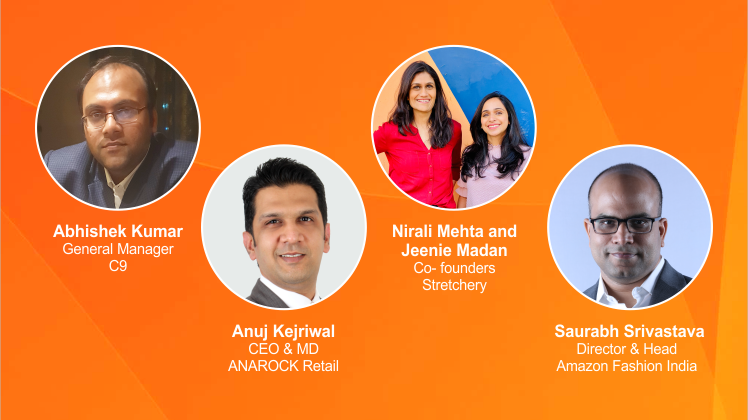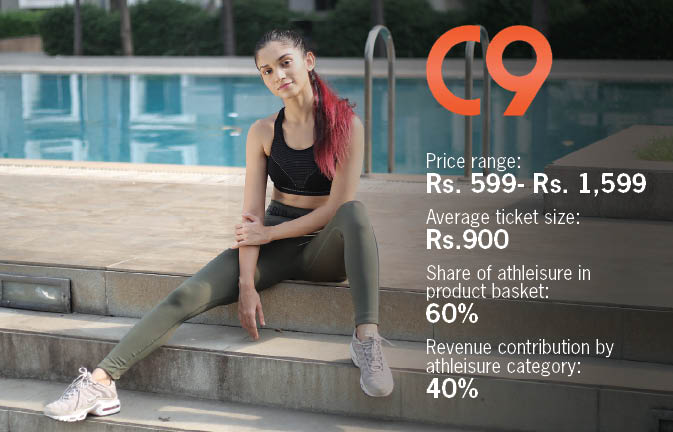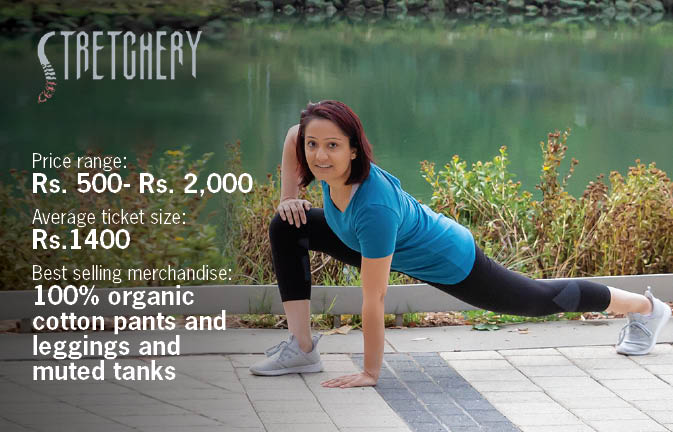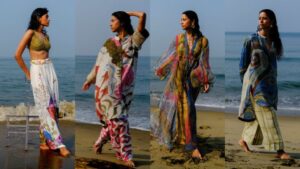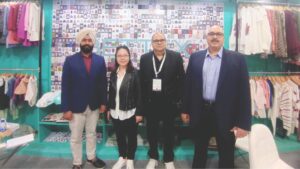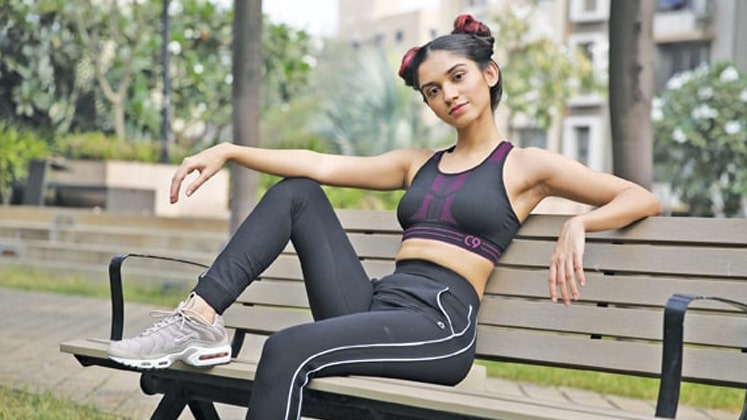
It has been a year since the world and how people used to function changed as we knew it and countries went on a complete and then partial lockdown, in order to contain the spread of COVID-19 pandemic. While this had a massive impact on companies and brands across industries, apparel and fashion has been one of the first categories to take a hit. One of the most important consumer-facing industries, estimated to be upwards of US $ 2.5 trillion globally, the fashion and apparel segment declined by almost 20 per cent in 2020 due to the pandemic.
Now when the world is gearing up to return to this New Normal wherein consumers are still sceptical about stepping out and the overall consumer behaviour has changed, key categories like athleisure, loungewear, etc., are coming to the forefront. Athleisure, as a category was already accelerating during the pre-COVID days and now, owing to ‘Work From Home’ as also the fitness needs of the consumers, the segment is witnessing significant acceleration.
Even as the overall fashion retail industry hit by the pandemic is making a gradual comeback, there is likely a tendency to move away from seasonal fashion to an all-year-long comfort wear with a reduction in the number of new SKUs every year (which is usually at 30 per cent -35 per cent for the fashion industry) and athleisure fits perfectly in this criteria.
According to Technavio,the athleisure market is poised to grow by US $ 80.74 billion during 2020-2024, progressing at a CAGR of over 4 per cent during the forecast period. It said that the value of the market was US $ 342.27 billion in 2019 and it is projected to reach US $ 423.01 billion by 2024.
Abhishek Kumar, General Manager, C9, asserts, “Athleisure market has certainly seen quantum jumps due to customer acceptance of the category and new needs being identified by the market. While new brands are emerging both in the men and women athleisure wear segment, established brands are also strengthening their athleisure wear category basket. Post-COVID, people are more health and immunity-conscious, so the demand for comfortable and functional clothes has increased a lot. The ‘Work From Home’ trend has also blurred the boundary between athleisure and casual clothing further, with people seamlessly spending a whole day in one single outfit.”
What’s stretching the segment?
As the nation moved towards its ‘Unlock’ phases, the fashion industry was pegging loungewear as the next big trend, post which came another new category -Work-From-Home wear. Further moving along, came this category which started surpassing these two in popularity – athleisure or athletic wear that doubles up as a leisure outfit. India is seeing athleisure as a growth story and management consulting firm Technopak had noted in May 2020 itself that while sales of outerwear and office shirts might drop, athleisure wear would grow as Work From Home has remained in vogue for a while. Not only this, Myntra CEO Amar Nagaram too had said they will be ‘focusing on athleisure to stay relevant’. The category is growing alright, but what really is affecting this growth?
Besides the comfort factor, technological innovations in fabric, the trend of sporty aesthetics and the body-positive movement has been fundamental to the success of the athleisure movement. “Among the major factors responsible for rising demand for athleisure category is that it combines functionality with sleek minimalist design. It makes people feel more comfortable and active even while at work or at the gym without really compromising on the latest fashion. Additionally, it supports the idea of a short workout during free time between works hours,” says Anuj Kejriwal, CEO and MD, ANAROCK Retail.
Currently, since only a few apparel categories are appealing to a wider range of audience, majority of fashion brands have now started developing better design and trendy styles in athleisure segment and have increased marketing efforts for the category. For C9, its repeat customers have ordered 5-7 articles across athleisure categories during 2020 which is almost 150 per cent more than the previous financial year.
Nirali Mehta and Jeenie Madan, Co- founders, Stretchery, aver, “At the heart of the pandemic, we saw a great rise in demand of our products. In the month where there was complete lockdown, we had great sales (even though the deliveries resumed much later). The softness like second skin, breathability and comfort of our products was something a lot of people turned towards, as it was the best choice to live in from morning till day without really moving out. We sold out a lot of our products and then faced the challenge of supplying them as the factories were shut. It was a great time but equally tough in the later months, with regard to the supply.”

According to estimates by the Boston Consulting Group, despite a 27 per cent drop in size of overall apparel market (from Rs.4129 billion in 2019 to Rs.3022 billion in 2022), it is expected to come back strongly and is expected to touch Rs.5781 billion by 2024 and this will be driven by the growing focus on comfort and functional athleisure category. It also highlighted the increasing influence of social media and websites rather than traditional media, on the fashion choices and buying habits of consumers.
Athleisure has found its way into the daily leisurewear of influencers and celebrities and their followers and this has moved designers to start creating athleisure clothes. “Back in 2016, key influencers Beyoncé and Rihanna promoted athleisure products of brands like Puma and Topshop respectively via Instagram, which immediately became a runway to commercial success. Gradually, this trend picked on over the years with brands collaborating with social media influencers across channels to generate awareness about their product/brand. Influencer marketing in fact is the new-age marketing, which is easily accessible and measurable than ever before. If done right, it is helping companies to increase brand awareness or even leading to high conversions among a specific target audience,” maintains Anuj Kejriwal.
Also Read: In sickness and in health: Couple-preneurs powering through in the business world
What’s selling and in demand?
While internationally, hoodies are a popular sub-category in athleisure but given the Indian climate, brands are mostly offering boxy and baggy T-shirts, shorts, tracksuits, crop tops, cargo trousers and leggings. Among these, leggings show the greatest potential.
Saurabh Srivastava – Director and Head, Amazon Fashion India, asserts, “The urban fashion trends combined with athleisure wear have gained preference over seasonal lifestyle trends. Fashion is giving sportswear an uplift while sportswear is giving functionality to fashion. On Amazon Fashion, comfortwear has seen a massive spike across genders (T-shirts, shorts, track pants and athleisure in general). Our activewear products range from sweatshirts, track jackets and hoodies to joggers and tracks, T-shirts and jerseys among others from leading brands like Jockey, Max, Easybuy, Van Heusen, Marks & Spencer, adidas, Puma, ASICS, Allen Solly, UCB, aLL Plus Size, etc. starting at an affordable price point of Rs.249. With an aim to make fashion more affordable and accessible to the larger customer base in smaller towns and cities, we continue to expand our value fashion portfolio, trending styles at affordable price points, thus catering to all the demands from our customers.”
In terms of colour and prints, minimalistics in pastels or black and white are mostly in demand but neon and floral prints have also become part of the 2020 fashion scene. Functional fabrics like quick-dry and sweat-wicking, etc., are in demand among the discerning. “Everything comfortable is in trend. From to-go leggings that can be teamed with tanks and shirts to easy lounge and yoga pants. More people want to be at ease and buy clothing that is not too casual but comfortable and versatile. Activewear has become the day-to-night go-to attire for daytime Zoom meetings transitioning into mat workout and further to Netflix evening binges for a lot of people. Our 100 per cent Organic cotton pants and leggings, and muted tanks are the best sellers,” state Nirali Mehta and Jeenie Madan.
It is also worth noting that sustainable athleisure has also become a rage recently and athleisure merchandise made using environmentally safe practices are popular among the millennial population across the world.
According to Research and Markets, the global sustainable athleisure market size is anticipated to reach US $ 117.4 billion by 2027. It is expected to expand at a CAGR of 5 per cent from 2020 to 2027. “There is importance and thought given not only about what you would like to wear but also to how it is made. We as a brand started the journey of building something that would offer fitness and yoga apparel in natural and sustainable fabrics in India. We want to be the reason for people to stretch – in mind and body. Our compact product offering of fitness wear, from leggings to tanks to accessories is made using materials like 100 per cent organic cotton, bamboo, recycled polyester, giving the customers an opportunity to choose fabrics and processes that are overall less harmful to the environment at large,” pride Nirali Mehta and Jeenie Madan.
What’s making it comfortable and functional?
While the segment is definitely in demand among millennial population, they have grown to be more aware and demand innovative designs and functionality and so manufacturers are innovating and launching new products with durable and high-quality material while the staple fabrics include cotton-based textiles like French terry or cotton jersey, lightweight poly-blends with lycra and elastane, etc.
Abhishek Kumar informs, “Our design team uses cotton modal, looper, viscose, polyamide and various other functional yarns and fabrics for manufacturing of T-shirts, tights, track pants, joggers and sports bra in this category. We manufacture most of our goods in-house via seamless manufacturing which provides better fit, comfort and quality for athleisure wear products. We work in 4 mini-seasons in a financial year to get a better turnaround and influx of new style to keep in line with changing trends. Only styles with good turnaround are repeated and on a category level, only 20 per cent of styles make the repeat production cut. Rest styles are designed afresh.”
Athleisure as a category also needs testing of functional benefits as well as looks and designs. Currently, brands and manufacturers offering athleisure merchandise are trying to incorporate Work From Home aspect too in their collection.
A leisure walk? Or not?
While fashion trends are fast changing, every month, every year, athleisure is not a usual trend and is definitely not a short-term trend. Athleisure is sure to continue to dominate the fashion landscape in 2021 even as India as a country has a long way to go in order to fully explore the category and its potential. There are also a number of challenges on the way, including lack of awareness among consumer base, sourcing of raw materials, etc.
“In terms of sourcing of raw materials, one of the biggest challenges seen is that the Indian market is traditionally a cotton-based country and hence it presently lacks high-quality polyester processing facilities. The country imports more than 90 per cent of synthetic fibre from countries like China, Hong Kong and Korea. Further, the Indian market is largely captured by overseas players like Nike, adidas, Reebok, Puma, etc., which makes it tough for domestic brands to expand their reach,” maintains Anuj Kejriwal.
Challenges aside, athleisure is the category to look out for right now given the current scenario wherein customers are likely to stay indoors with limited work and social interactions and are looking for stylish comfort wear that doubles up as their workout outfit too.

